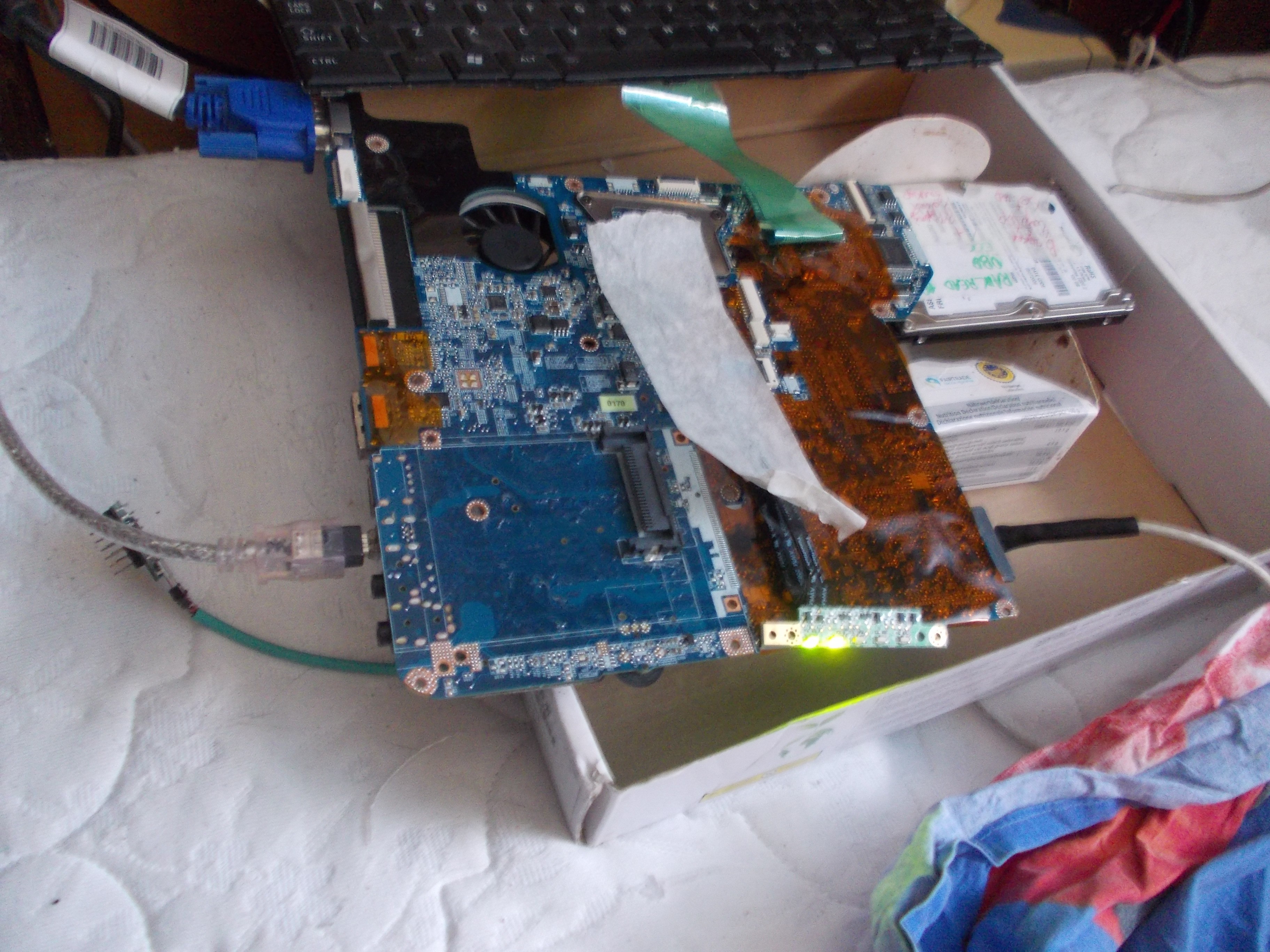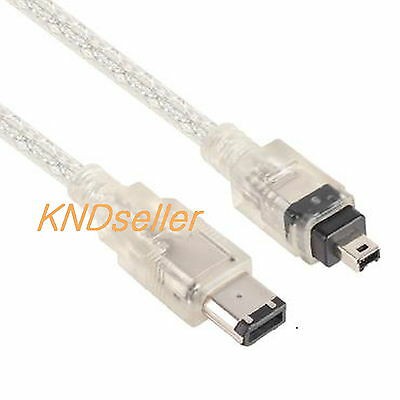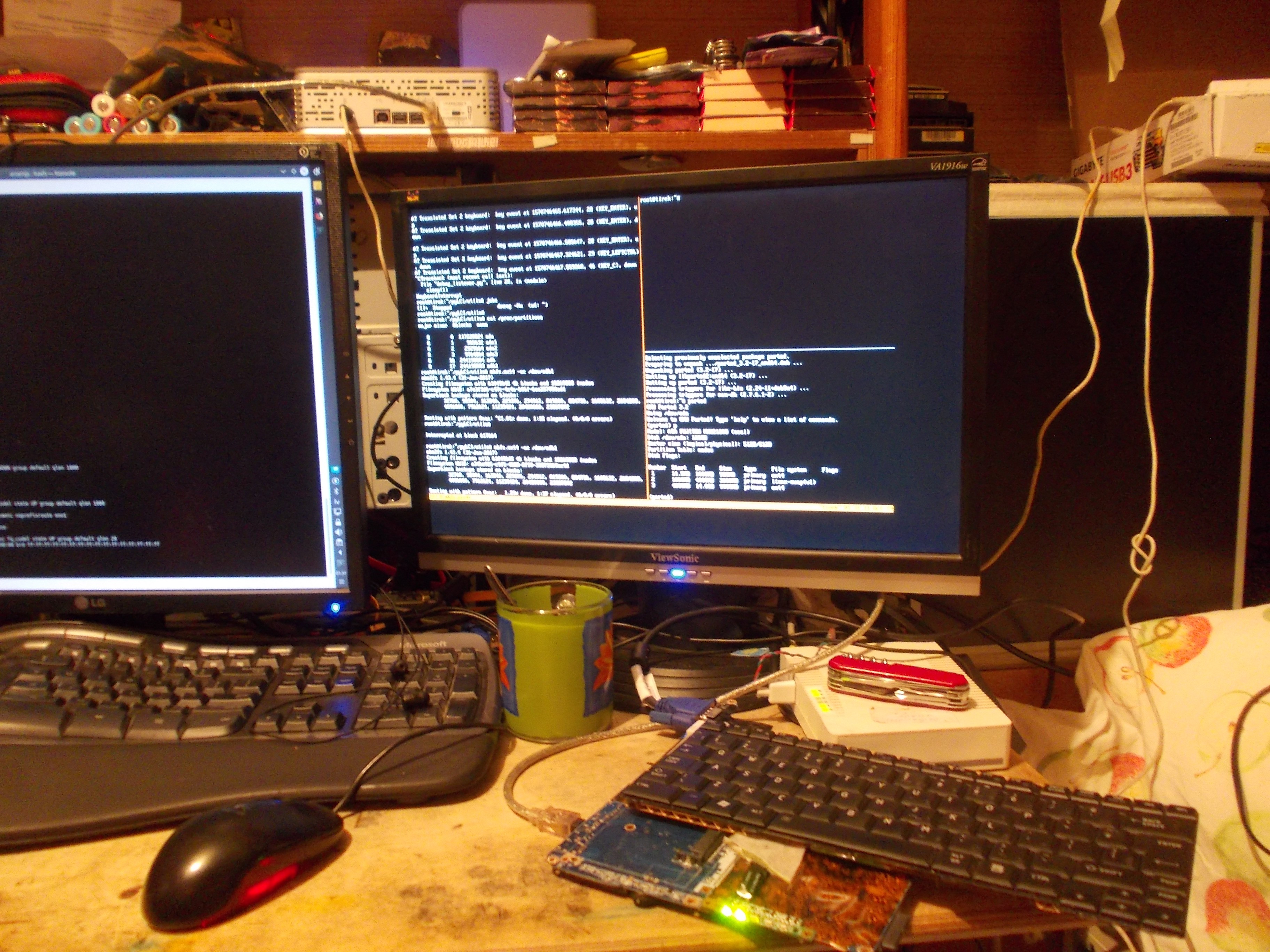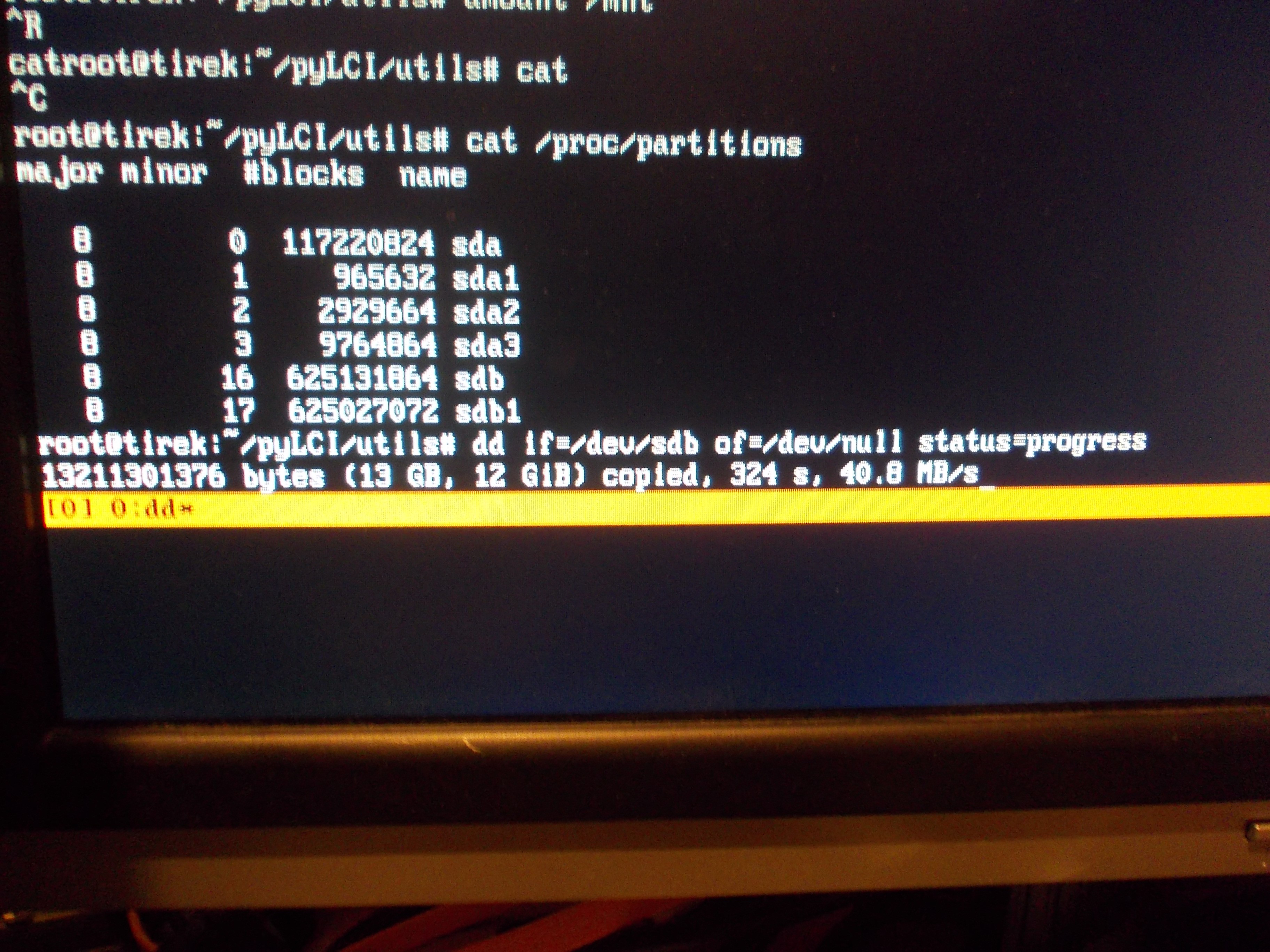Since there are no USB ports available, I can't exactly do a LiveUSB boot or something. Fortunately, I had an old SATA HDD with a Debian Jessie install on it, from an old server of mine. Long story short, that's how I booted this motherboard up.

You also need network, don't you? I have a desktop computer with a free PCI slot and a PCI FireWire card. The card is good, but one of the SMD capacitors broke off... Let me fix that.

You also need a cable. Fortunately, I bought one a couple of weeks ago, one like this:

Connect my desktop and this laptop (both running Linux), load proper kernel modules, do some "ip addr" commands on both to set up static IPs, add routes (+disable an old firewall that was on the HDD install I reused):

Add a default route on the target and run my trusty firewall script on the desktop, and I can also ping 8.8.8.8!

I can also install packages with apt! If you do "apt install memtest86+" , your Grub menu will have a "Memtest" option. If you were wondering how I booted into Memtest in the previous log, that's how =D

Of course, it needs a fresh Debian install. However, you can't boot into any Debian install media, and the only networking is through Firewire, which the installer image won't necessarily support!

After a bit of thinking, I connected another HDD through the ODD SATA port (using a male-male SATA adapter I soldered myself from two harvested connectors) and used this method to install Debian on it using the Debian Jessie install I had on the old HDD. I managed to fuck up GRUB and had to do some rescue shell and GRUB menu editing:

Nevertheless, I got a fresh install!

Log in, set up networking again (on the fresh system) and install some packages, add tmux and set up some unique colors for it:

I also found an external Firewire-enabled SATA HDD enclosure! (on top of the shelf)

Let's test its speed:

These 40MB/s are quite stable. Good for something built out of trash! To sum up, both FireWire storage devices and FireWire networking are pretty much plug-and-play on Linux.
There's also some Oracle-made software to turn a Linux machine into a SBP-2 device, in short, make a Linux host emulate a FireWire-connected HDD. Bad news - the software is from 2003, I don't think it makes sense for me to even try to make it work.
 Arya
Arya
Discussions
Become a Hackaday.io Member
Create an account to leave a comment. Already have an account? Log In.